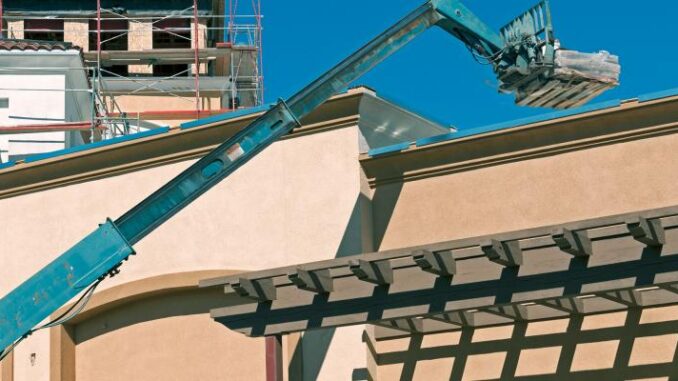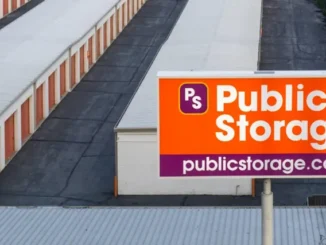
The next few years are set to see a significant ramp-up in new outlet center construction. But outlet center tenant mix is changing to reflect a new focus on experiences.
When Tanger Factory Outlet Centers Inc. broke ground on Tanger Outlets Nashville this past May, the 290,000-sq.-ft. project became the first of several outlet center developments scheduled to be delivered in the next 24 to 36 months.
It’s been six years since Greensboro, N.C.-based Tanger, one of the nation’s largest outlet center owners, has broken ground on a new development. The REIT has rigorous development guidelines, including at least 60 percent pre-leasing commitments with visibility to 75 percent, receipt of all required permits and an acceptable return on cost hurdle.
Tanger Outlets Nashville, situated on a 32-acre parcel along I-24, will feature more than 70 brands in six buildings. It has a development cost of $450 to $500 per sq. ft., which translates into $130 million to $145 million all-in price tag. It will be the REIT’s third Tennessee property, with sister centers covering the Sevierville and Memphis communities. Tanger’s overall portfolio consists of 36 centers totaling 13.6 million sq. ft. across 20 states and Canada.
“What’s exciting to me is that the outlet industry itself is about 70 million sq. ft. in a 7-billion-sq.ft. retail landscape, so there’s a lot of upside as far as development and tenant demand,” says Tanger CEO Stephen Yalof.
When Tanger Outlets Nashville opens in the fall of 2023, it will be Music City’s first outdoor outlet center property (Opry Mills, owned by Simon Property Group, opened in Nashville 2000). But it won’t be the only one.
Just a few weeks after Tanger Outlets Nashville broke ground, Simon announced that it was ramping up its outlet center development activities and planned to build an outlet center in Nashville too. The Indianapolis-based REIT is developing the 300,000-sq.ft. project under its Premium Outlet brand in conjunction with local firm Adventurous Journeys (AJ) Capital Partners.
Simon, along with its portfolio of regional malls and lifestyle centers, owned 69 outlet centers across the U.S. and more than 33 outlet centers internationally, as of March 31, 2022. In addition to its Nashville center, Simon will also resume development on a 400,000 sq.-ft. outlet center in Carson, Calif., situated along the highly traveled I-405 freeway, and the 330,000-sq.-ft. Tulsa Premium Outlets in Jenks, Okla., off I-75.
And outside of New York City, Simon is moving forward with its fifth expansion phase at Woodbury Common Premium Outlets. The expansion, which is expected to break ground in 2024, includes 160,000 sq. ft. of new shops, additional parking, amenities and two hotels.
“It’s interesting and notable that all these projects are getting the green light at a similar time after years of almost no development activity,” says Vince Tibone, a REIT analyst covering outlet centers with research firm Green Street. “Once these new properties are stabilized, we’ll see what kind of impact they’ll have on nearby existing malls and competing outlet centers.”
Fundamentals trending in the right direction
When you add Tanger and Simon’s outlet development projects together, they total roughly 1.8 million sq. ft. To put that in perspective, 1.2 million sq. ft. of outlet center space came online from 2019 to 2021, according to real estate data firm CoStar. The last outlet center development boom occurred toward the beginning of the Great Financial Crisis, when nearly 4 million sq. ft. of outlet center space was dumped on the market.
Outlet centers, like most retail property types, experienced a decline in occupancy during the acute phase of the COVID-19 pandemic. But because of their outdoor setting, they were among the first to welcome back shoppers who were still leery of visiting enclosed malls.
CoStar data indicates that the average vacancy rate for outlet centers over the past dozen years has been 4.0 percent, with a low of 2.9 percent and a peak of 5.6 percent, Today, the vacancy rate averages 4.9 percent. No other retail property type remains so close to its peak vacancy rate except malls, according to Kevin Cody, a strategic consultant with CoStar Advisory Services in Charlotte, N.C.
In the four years leading up the pandemic, the vacancy rate for outlet centers bounced between 3.6 percent and 3.8 percent. In 2020, it reached 5.3 percent before dropping to 5.2 percent in 2021.
In 2020, rent growth in the sector dropped to 2.0 percent from 2.9 percent the previous year, but rent growth in 2021 and 2022 so far has been outsized. For example, the first quarter of 2022 recorded rent growth of 5.8 percent, according to CoStar.
“Considering where we are in the recovery from COVID, outlets are performing well,” Tibone says. “Though there were a lot of retail bankruptcies and store closings, the recovery has been strong in terms of tenant demand. Leasing economics aren’t quite where they were before the pandemic, but they’re trending in the right direction.”
In the past 15 years, outlet center absorption turned negative only once prior to the pandemic—in 2010, when it reached 264,154 sq. ft., according to CoStar. Throughout the COVID era, 2020 was the only year of negative absorption for the sector, at 414,715 sq. ft.
In the long term, Tanger’s Yalof expects tenant demand for outlet space to continue, along with access to capital for developers looking to deliver new outlet projects. “Retailers that participate in the outlet business are constantly evolving, and great brands that have been available only online or direct-to-consumer are now discovering the outlet channel,” he says.
A good example, according to Yalof, is Summersalt, a direct-to-consumer swimwear brand that opened its first ever bricks-and-mortar store at one of Tanger’s outlet centers in Myrtle Beach, S.C. Outlet centers are not only a way for digitally native brands to build greater awareness with shoppers, but they’re also an effective channel for clearing excess or older inventory. “Digitally native brands are going to be a big part of the outlet story in the future,” Tibone says.
Diversifying the outlet tenant mix
Because apparel and apparel-related retailers account for such a huge percentage of outlet center tenancy—roughly 65 percent—outlet centers are particularly vulnerable to decreased spending on clothing, shoes and accessories.
E-commerce also presents a threat, though it’s worth noting that no online only platforms that featured exclusively discounted brands have survived.
“Going forward, outlet centers are going to have to diversify their tenant mix and reduce their reliance on apparel,” Meno says. “They’re going to have to focus more on experiential retail and dining to ensure continued foot traffic.”
Yalof shares this view. Over the past several years, the way people shop has completely changed, he notes. “Whether they’re with a car full of people or alone, they’re looking for more things to do and better entertainment. And though food hasn’t been a strong suit of outlet centers in the past, it’s becoming more and more important because people want to stay longer.”
To that end, Tanger is actively introducing non-retail uses, including food, entertainment and experiential concepts to its centers. Recently, it added two Dave & Busters to its portfolio. Additionally, the REIT rolled out a local leasing initiative focused on iconic local brands, including a small business owner outreach program.
Pressure on consumers
Despite promising value to shoppers, outlet centers aren’t immune to weak economic conditions and reduced consumer spending. In May, U.S. retail sales, unadjusted for inflation, fell by 0.3 percent compared to the month prior, according to the Department of Commerce. Retail sales growth for April was revised to 0.7 percent from a previously reported 0.9 percent. On a year-over-year basis, however, retail sales in May went up by 8.1 percent, reflecting growth that is above pre-pandemic levels.
Right now, U.S. consumers remain financially healthy, and even though economic growth rate is slowing globally, the U.S. is unlikely to enter into a recession during the remainder of 2022, according to the National Retail Federation’s Chief Economist Jack Kleinhenz.
“Regardless of the prospect of a downturn or whether it will meet the threshold of a recession, the consumer outlook over the next few months remains favorable,” Kleinhenz says. “The economy is moving away from extremely strong growth toward moderate growth, but increased income from employment gains, rising wages and more hours worked is expected to support household spending.”
In Yalof’s view, there is also a significant difference in the profile between discount shoppers and outlet center shoppers. Discount shoppers are more impacted by inflation, particularly as it relates to soaring gas prices. Outlet center shoppers, in contrast, are “discerning, aspirational and looking to get the brands they love at a great everyday value.”
Source: Wealthmanagement.com



